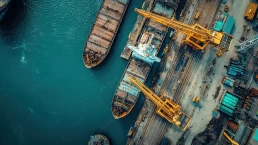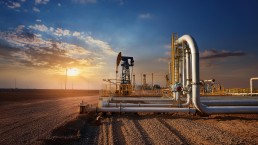The oil and gas industry, known for its demanding and high-risk environments, has made significant strides in workforce safety thanks to connected worker solutions. These cutting-edge technologies are designed to keep workers safe by leveraging real-time data, predictive analytics, and IoT-enabled devices. With workforce safety being a top priority, companies are increasingly adopting innovative solutions to minimize hazards and enhance operational efficiency.
Here are five key innovations in connected worker solutions that are revolutionizing safety in the oil and gas industry:
1. Wearable Technology for Real-Time Health Monitoring
Wearable technology is one of the most impactful innovations in connected worker solutions. These smart devices, such as helmets, wristbands, and smart clothing, are equipped with sensors that monitor a worker’s vital signs and environmental conditions in real-time. For instance, they can detect heart rate, temperature, and exposure to hazardous gases, instantly alerting workers and control centers when dangerous conditions arise.
According to a 2022 study by MarketsandMarkets, the global market for wearable technology in the oil and gas sector is expected to grow at a compound annual growth rate (CAGR) of 17.9%, driven by the need for enhanced safety measures in high-risk environments. These wearables enable companies to respond swiftly to potential hazards, reducing the risk of accidents and improving overall workforce safety.
2. IoT-Enabled Environmental Monitoring
The integration of IoT (Internet of Things) devices into the oil and gas industry is transforming how companies monitor and manage environmental risks. IoT sensors placed on-site continuously track factors like gas levels, temperature fluctuations, and equipment status. This data is transmitted to central control rooms, allowing supervisors to make real-time decisions to prevent hazardous incidents.
A report by McKinsey highlights that IoT technology can help reduce equipment-related accidents by up to 40%, as it enables predictive maintenance. By identifying potential equipment failures before they happen, companies can address issues proactively, minimizing risks and operational downtime.
3. Geofencing and Location Tracking for Worker Safety
Geofencing is an innovative solution that enhances worker safety by using GPS technology to create virtual boundaries around hazardous zones. Connected worker solutions utilize geofencing to track workers’ movements in real-time and send automatic alerts when they approach or enter restricted or dangerous areas.
This technology also enables emergency response teams to locate workers quickly in case of an accident or evacuation. According to a study by Deloitte, location tracking and geofencing can improve response times by up to 20%, which is critical in environments where every second counts.
4. Remote Monitoring and Communication Systems
In the oil and gas industry, many operations are conducted in remote or offshore locations, where communication challenges can pose a significant risk. Connected worker solutions are now equipped with advanced communication systems that allow real-time interaction between workers on-site and supervisors or experts located elsewhere.
These systems enable live video feeds, voice communication, and data sharing, allowing workers to receive immediate guidance when facing complex or dangerous tasks. Research by Accenture shows that companies using remote monitoring and communication technologies have seen a 15% improvement in operational efficiency and a marked reduction in safety incidents.
5. Predictive Analytics for Accident Prevention
One of the most transformative innovations in connected worker safety is the use of predictive analytics. By analyzing historical and real-time data, predictive models can forecast potential safety risks before they occur. For example, machine learning algorithms can identify patterns related to equipment failures, worker fatigue, or environmental hazards, allowing companies to take preemptive action.
A study conducted by PwCfound that companies using predictive analytics saw a 30% reduction in workplace accidents, as these systems provide valuable insights into potential threats. This allows organizations to mitigate risks early, significantly improving worker safety and operational efficiency.
Heading to a Safer and Smarter Future
The oil and gas industry is embracing connected worker solutions to create safer and more efficient workplaces. Innovations such as wearable technology, IoT-enabled monitoring, geofencing, remote communication systems, and predictive analytics are revolutionizing how companies safeguard their workforce. These technologies not only reduce the risk of accidents but also optimize operations by providing real-time insights and proactive safety measures.
As connected worker solutions continue to advance, the oil and gas industry stands to benefit from improved safety standards, enhanced productivity, and a more resilient workforce. With the global connected worker market projected to grow from USD 8.9 billion in 2022 to USD 23.5 billion by 2027 (MarketsandMarkets), it’s clear that these innovations are reshaping the future of safety in one of the world’s most challenging industries.
Want to reduce risks and improve safety in your oil and gas operations? See how Tracklynk’s solutions can help.



